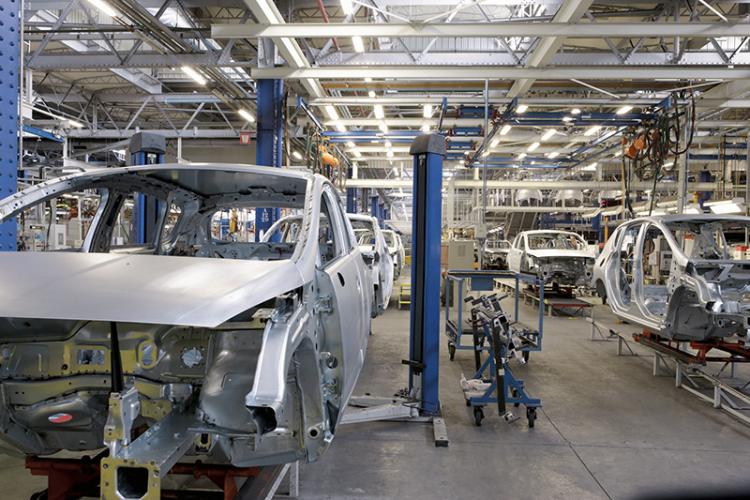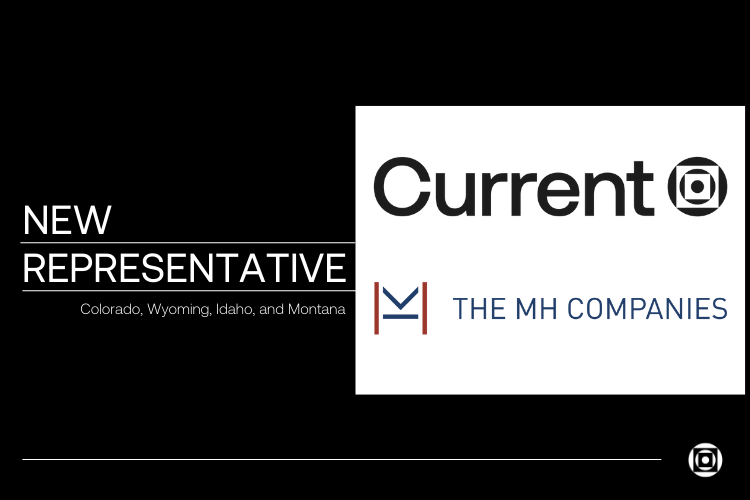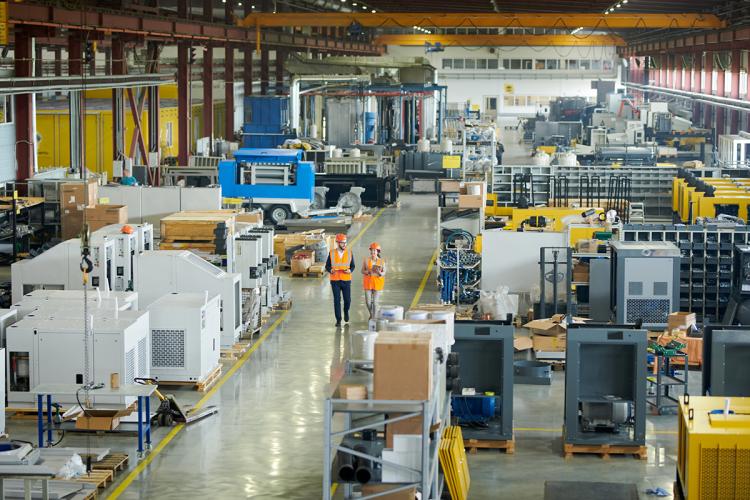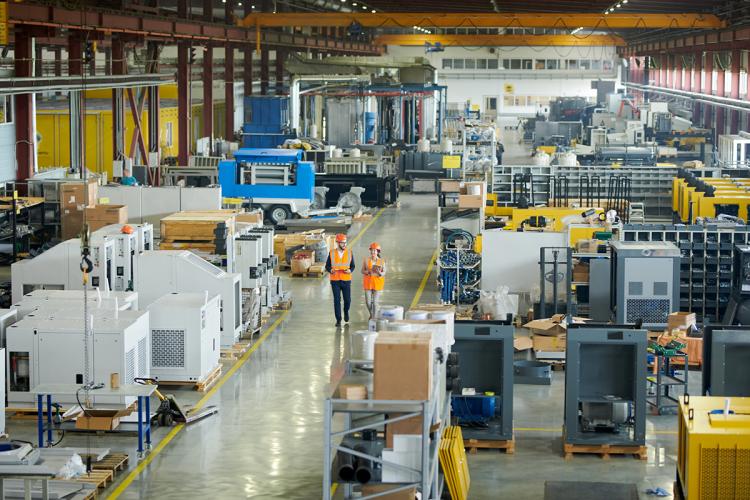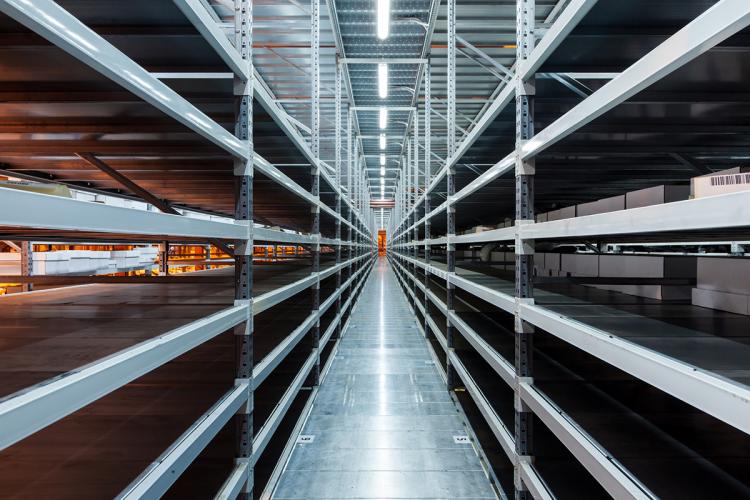A Q&A: The Benefits of LED Lighting for Industrial Environments
A Q&A: The Benefits of LED Lighting for Industrial Environments
Industrial environments are searching for any edge that can help them reduce costs and improve productivity. And some manufacturers have found that advantage with LED lighting.
Breitner Marczewski, an Energy Engineer at General Motors, spoke with Current about the automaker’s switch to LEDs during the webinar “General Motors: Driving Energy Efficiency with LED.” As part of the group responsible for sustainability reporting and setting utility budgets for industrial sites across North America, he works closely with individual facilities to ensure they are meeting energy benchmarks and identifying ways to reduce energy consumption in the future. Marczewski had a lot of things to say regarding why GM chose lighting as a means of cutting energy usage and how they went about upgrading their plants.
Question: How is GM looking to meet its long- and short-term energy goals?
Breitner Marczewski: GM North America has a program called ESPI, which stands for Energy Savings Projects Implementation. It is a fund averaging $20 million per year to be spent on energy and water savings projects. The pool of projects should have a simple payback of two years, and a single project cannot have a payback beyond 2.5 years. Through this process, our group is able to work with each site to implement energy savings projects.
The “energy treasure hunt” is a two- to three-day event where the engineering team—my group—engages with the employees of a specific site in order to find low-cost energy savings opportunities coming from maintenance, operational or even behavioral actions. Some opportunities can be easily identified, such as equipment running during downtime. Others are not so easy. After we compile a list of all the savings opportunities we find during the evaluations, we develop a business case for each one.
What were some of the key factors that drove the decision to look at LEDs as part of the energy reduction plan?
Marczewski: At GM, we have the Lighting Strategy Committee updating our lighting specifications on a yearly basis—this is done to keep up with the technology. In 2015, when we reviewed several fixtures, including the ABVs and ABRs, we selected the one with above average performance to be used in our facilities. The key factors that determined the final selection included efficacy, the lumens per watt; the CRI, color rendering index; warranty; the L70 and L90 lifespan ratings; lumen depreciation; and, of course, the cost.
Additionally, lighting is a key component to drive culture change regarding energy conservation because it is the first thing employees will notice when they come in to the plant. When you have a good lighting system in place, where lights are on only where they are needed, that can open other doors for more energy savings projects.
Once you decided that you were going to move forward with LED, how did you decide what the right LED solution was?
Marczewski: The Lighting Strategy Committee reviewed and tested several products, and those that demonstrated the best performance on the key factors were selected.
There were several products in the market and each one had its own unique features. Our specifications were our guidelines to determine which ones we should choose—in our case, our specs had to address different environments, such as office spaces and manufacturing.
To compare products, we determined which factors we should be looking for a specific location. In general, for both manufacturing and offices we looked at the efficacy (lm/W), lighting distribution and L90 rated life of 45,000 hours at 25 degrees Celsius (77 degrees Fahrenheit). Moreover, the nature of your process should be considered when selecting and comparing products. For example, at GM we can only use silicon-free fixtures for our internal environments due to the damage that silicon can causes in our paint process.
Scheduling LED installations in industrial environments is a challenge. How did GM minimize disruption to the business?
Marczewski: Each site determines the best windows to perform the installation; it is coordinated with the area managers to avoid disrupting production. Depending on the size of the project, is can also be scheduled to be implemented during our shutdown period in July. The optimum time to do the installation would be the shutdown during summer or when the site has a scheduled shutdown. Key considerations are safety and accessibility to the location. Everything must be coordinated within the site.
Let’s talk results. What type of energy savings have you seen so far? Have there been any additional benefits to the business because of this project?
Marczewski: Our projected savings are either accurate or more than we anticipated because we used motion sensors. At one site, energy manager showed me a charge from right after the retrofit and you could see the energy reduction from using the GE products.
Beyond savings, the better CRI from the LED fixtures have improved our employee satisfaction with their workplace. Another benefit is the small thermal load that the LED emits inside the plant. This is very important for the sites in Mexico where the buildings are not air conditioned—it reduces discomfort in the spring and summer. Other benefits are standardization of the products, which helps with procuring materials. Maintenance costs are being realized as the LED last longer, and associated with that comes improvement on safety, as you don’t need to send a maintenance crew on a lift to replace a bulb or a faulty ballast, reducing the risks of an accident—and that, for GM, is paramount as we are committed to safety in everything we do.
Want to learn more about how General Motors is leading the way toward energy efficiency in automotive manufacturing? Watch the full on-demand webinar with GM and Current.


